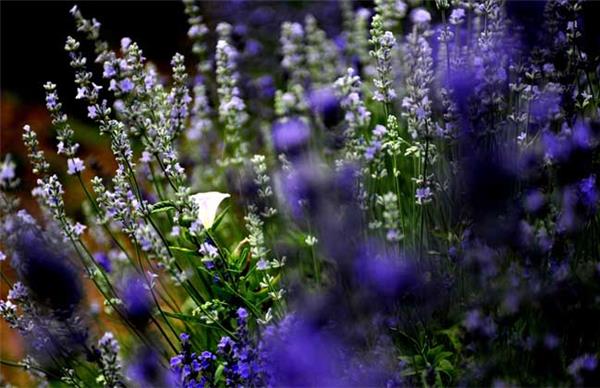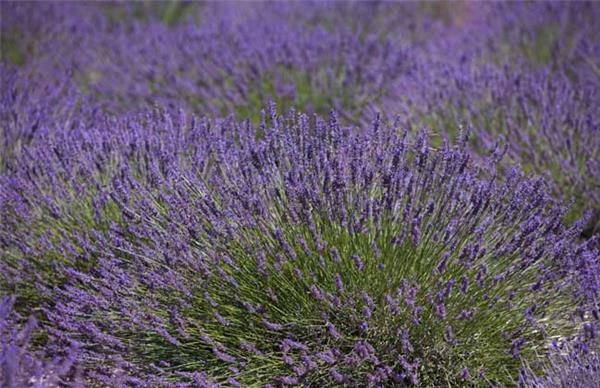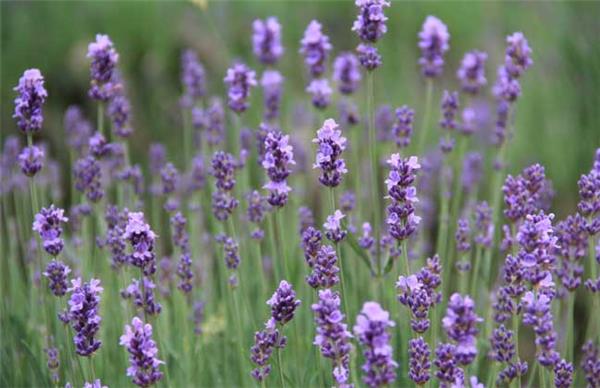The Propagation method of Lavender sowing and Propagation
Lavender is a kind of flower that everyone likes. The home decorated with lavender is romantic and romantic, and it is also a kind of flower with a wide range of uses. I believe we all want to plant a few pots at home. Reproduction mainly includes sowing, cutting, pressing, root splitting and other methods. In production, we mainly use cuttings to breed. Let's take a look at the breeding methods of lavender.

Ramet propagation of lavender
The ramet propagation of lavender can be carried out in spring and autumn. 3-4-year-old plants are used and separated by adult roots from March to April in spring, with bud eyes on each branch.

Sowing and propagation of lavender
1. Seed collection: lavender blossoms in April and can be harvested after the seeds are ripe from June to July. After the spikes of lavender are collected, they are spread indoors or in a greenhouse with thin film. Do not pile up too thick and dry naturally. After about 10 days, when the pedicel and exocarp are brittle, rubbed and blown, the nutlets and impurities can be separated. French lavender nuts need to be further air-dried. When its water content is reduced to 12-15%, it can be put away in a ventilated and cool place.
2. Sowing method: lavender is suitable for spring sowing (March-May) and autumn sowing (September-October). It is better to use a special sowing medium when sowing, or it can be prepared with peat and a small amount of perlite. Install the medium in a seedling tray, smooth it, spray a small amount of water and then sow, strip sow or sow, sow about 10 seeds per square decimeter, cover with a thin layer of coconut bran or vermiculite after sowing, and spray water again. In the future, depending on the dry and wet medium, spray water properly.
3. Post-sowing management: lavender seeds can be unearthed about a week after sowing, and their seedlings have strong disease resistance. After being unearthed, they can be sprayed 800 times as much as carbendazim every two weeks to prevent disease, requiring certain light and nutrients, otherwise they are easy to grow and form slender seedlings. When lavender grows to 4-6 true leaves, it can be transplanted once to facilitate the distribution of side branches, and the seedlings can be planted in autumn and spring. The spring sowing seedlings can be planted after 50-60 days.

Propagation of lavender cuttings
1. Cutting period: lavender has strong adaptability to cuttage reproduction, and can be propagated in spring and autumn. Even in summer, it is feasible to use twig cuttings, but the conditions are strict, humidity is small, wilting is easy, and stem rot is easy when humidity is high. From the point of view of production, it is generally most suitable to be planted when the local temperature drops to 15-25 ℃ in autumn.
2. Cuttings treatment: the quality of cuttings has a direct effect on the survival rate of cuttings. Cuttings should be on well-developed plants, select one-and-a-half-lignified branches with short and sturdy nodes that are not heading, and cut off as cuttings at the top of 8-10 cm. The cuttings should be cut close to 0.5-1 cm below the stem nodes, so as to smooth the cut and remove 2/3 of the lower leaves so as not to break the phloem.
3. Insertion method: the best insertion medium is a mixture of perlite and peat, the nursery with favorable conditions can insert the bed in the greenhouse, and those with poor conditions can do the bed in the field and cover the film with arch pole after insertion. The bed is generally 1.5 meters wide and the length depends on the site. The media is about 15 cm thick, pay attention to disinfection before use, insert 5-8 cm deep, plant spacing 3-4 cm, row spacing 5-6 cm, pour water immediately after insertion, cover with film to keep moisturizing.
4. Management after insertion: proper humidity after planting lavender can promote root system development and increase seedling rate. It will take root more than 10 days after planting, and it is more sensitive to water. It is suitable for a little dry. It can be put on a nutrition bowl or transplant two months later to promote the sound development of root system, increase branches and cultivate strong seedlings.
Related
- Wuhan Hospital Iron Tree Blooming Result Was Instantly Frightened by the Gardener Master
- Which variety of camellia is the most fragrant and best? Which one do you like best?
- What is the small blue coat, the breeding methods and matters needing attention of the succulent plant
- Dormancy time and maintenance management of succulent plants during dormancy
- Minas succulent how to raise, Minas succulent plant pictures
- What are the varieties of winter succulent plants
- How to raise succulent plants in twelve rolls? let's take a look at some experience of breeding twelve rolls.
- Attention should be paid to water control for succulent plants during dormant period (winter and summer)
- Watering experience of twelve rolls of succulent plants
- Techniques for fertilizing succulent plants. An article will let you know how to fertilize succulent plants.



